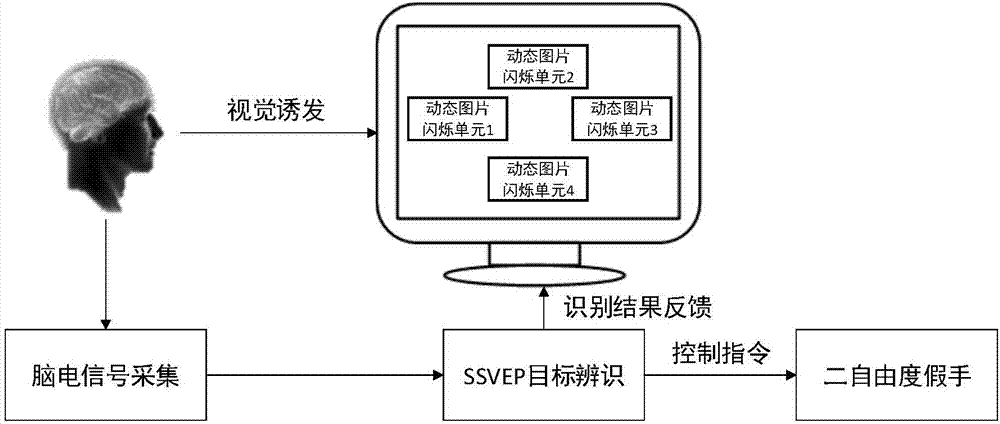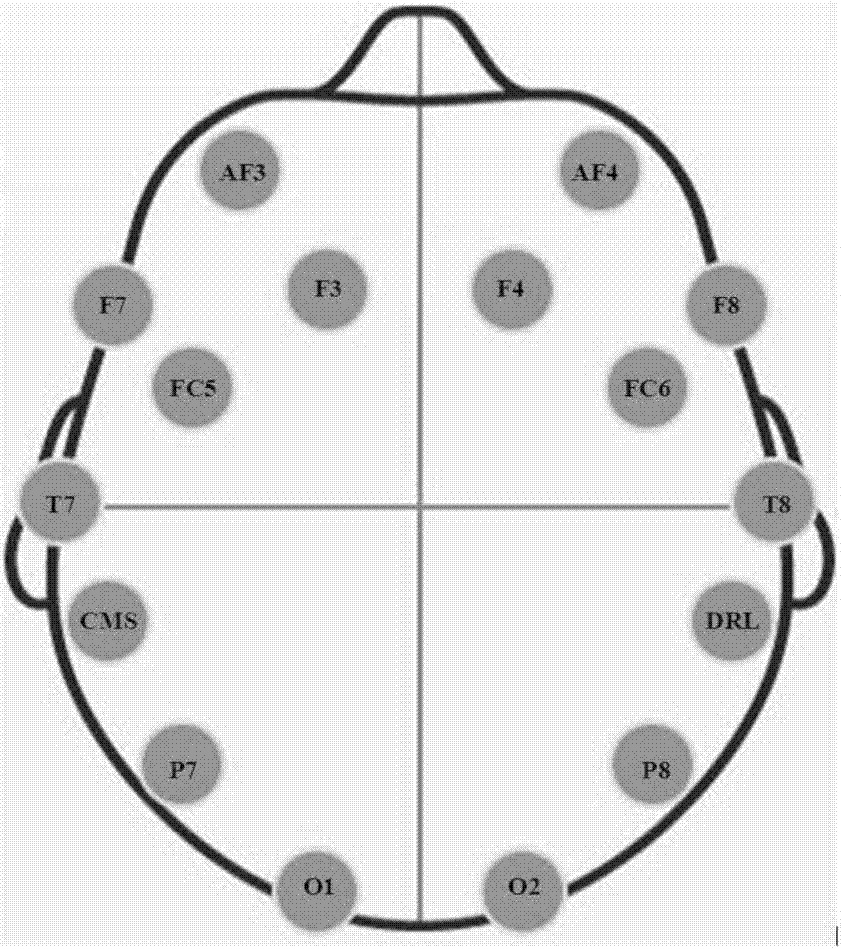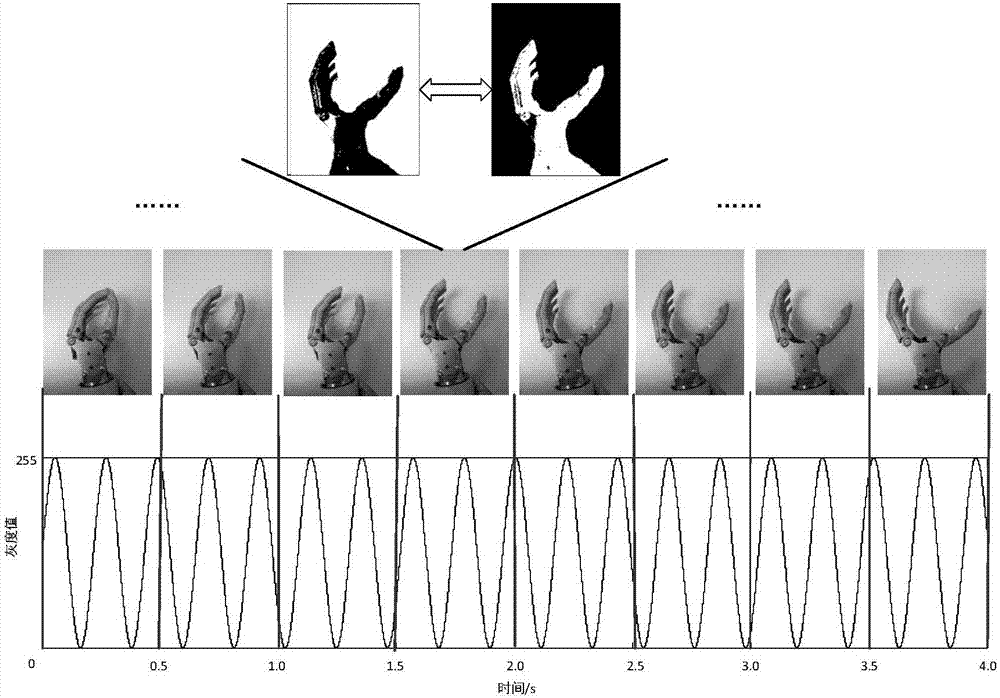Steady visual induction paradigm design and identification method for introducing continuous action of object
A technology of steady-state visual induction and recognition method, applied in the field of brain-computer interface, to achieve the effect of improving the difference and improving the accuracy of recognition
- Summary
- Abstract
- Description
- Claims
- Application Information
AI Technical Summary
Problems solved by technology
Method used
Image
Examples
Embodiment Construction
[0034] The present invention will be described in detail below in conjunction with the accompanying drawings.
[0035] The design and identification method of the steady-state visual evoked paradigm that introduces the continuous motion of the object includes the following steps:
[0036] Step 1, refer to figure 1 , the user wears the EEG acquisition equipment, sits in front of the computer, and the head is 60-100 cm away from the computer monitor, records the EEG signals in the visual occipital lobe area of the user's head, and the collected EEG signals are transmitted to the computer wirelessly via Bluetooth ; Among them, the EEG acquisition equipment adopts 16-channel Emotiv EPOC EEG amplifier, each channel is placed according to the international 10 / 20 standard, and the placement method refers to figure 2 , the sampling frequency of the amplifier is 128Hz.
[0037] In step 2, the controlled object is two free artificial hands, and the videos of four continuous movemen...
PUM
 Login to View More
Login to View More Abstract
Description
Claims
Application Information
 Login to View More
Login to View More - R&D
- Intellectual Property
- Life Sciences
- Materials
- Tech Scout
- Unparalleled Data Quality
- Higher Quality Content
- 60% Fewer Hallucinations
Browse by: Latest US Patents, China's latest patents, Technical Efficacy Thesaurus, Application Domain, Technology Topic, Popular Technical Reports.
© 2025 PatSnap. All rights reserved.Legal|Privacy policy|Modern Slavery Act Transparency Statement|Sitemap|About US| Contact US: help@patsnap.com



